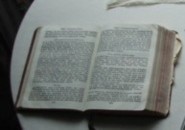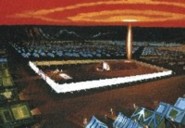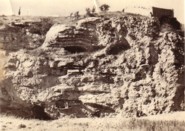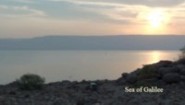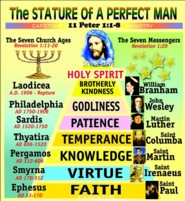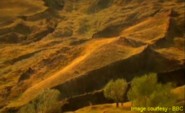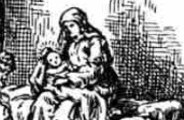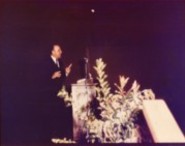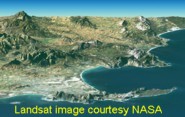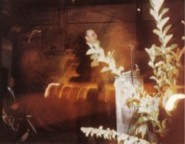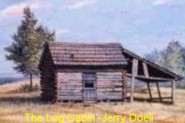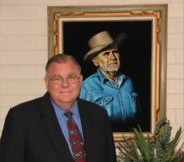Mathematics of the Pyramid.
<< prev
next >>
Secrets of the Pyramid.
David Shearer.The Great Pyramid was built about 2400 BC, which makes it nearly 4500 years old. The stones were marked with king Cheops's sign. He was the king who authorized the building, but he wasn't the designer.
Every year in ancient Egypt a cataclysmic event occurred. The melting of snows in Ethiopia, sends an inundation of water down the Nile, and the flat lands are covered with 12 meters of silt.
For nine months of the year, the peasants, grew their crops on these flat lands. They would move their whole families to the area, but the workers needed to know the day of the year accurately in order to evacuate to safety.
By observing the shadow that the Great Pyramid cast on the paving stones on the north side, one could tell how many days until evacuation was required.
As the sun progressed north the shadow would get shorter and shorter, until it disappears. This occurs at midday on the spring equinox, when daytime equals night and the sun is directly over the apex of the pyramid, - there is no shadow cast by the pyramid. It “swallows” its own shadow.
The designer of the pyramid had made a method for determining the days, and seasons of the year, in the same way a sundial determines the time of the day. As well as the shadow effect on the northern face, in winter months, during the summer, the polished face of the pyramid's southern slope would have cast a sun reflection that was as definite as the shadow.
You may think that the sides of the pyramid are flat, but there is a hollowing in the sides that was not discovered until recently. This has been shown in photos where there is what looks a vertical line (caused by shadowing) down the center of the faces. This occurs on all faces, and also aids reflection of the sun.
It also helps to keep water runoff to the center of the pyramid, to protect the edges, so they can cast their defined shade.
Ancient Theodolite.
In 1880 an Australian surveyor, Robert Ballard, was in a train passing the pyramids. He realized that a person could obtain an accurate line anywhere within sight of the pyramids, by using nothing more than a weight and string, and sighting the peak of the pyramid and the sun.
When the Nile flooded, the boundaries of the farmland, and the surrounding country were obliterated. These could be quickly surveyed using the sun, the pyramids, and string and a weight.
Ballard suggested that the smaller pyramid might have been sheathed in red granite, allowing it to stand out in contrast to the other two, providing another way of line sighting.
Construction.
It is a free standing stone structure. There is no mortar used and no steel reinforcing, quite a feat, considering it is as high as a modern forty story building. It contains more than two and a half million blocks of limestone and granite, that weigh between 2 and 70 tons each. Ancient historians have claimed that the pyramid was sheathed in polished limestone which was inscribed with writing and symbols.
In order to prevent the pyramid from falling apart because of it's tremendous weight, the stone blocks in each of the corners are “keyed” into “sockets” in the rock of the Giza site. Apart from these sockets the pyramid's base on the Giza site is flat to within a sixteenth of an inch over 13 acres.
There was once a pivoting stone covering the entrance to what is called the Descending Passage, which is at an angle of 26.5 degrees and goes to a pit underneath the pyramid. Another passage, the Ascending passage, exactly at an angle of 26.5 degrees, climbs off this passage until it reaches a junction of a horizontal passage which goes to a room called the “Queens chamber”, and a high section of passage (seven stepped walls) called the “Grand gallery”. At the end of the Grand gallery there is a passage to the “King's chamber” but it requires a ladder to reach it (rapture?). The passages are lined with polished limestone and have been created at this exact angle, by sighting a certain star present at the time of construction. The upwards passage, achieved by reflecting the starlight in a pool of water at the junction of Descending and Ascending passages.
The Grand gallery is 157 feet long, the walls are 28 feet high narrowing in seven steps, such that it is 62 inches wide at the base, but 41 inches at the top. It is inclined at the same angle - 26.5 degrees, as the Ascending and Descending passages.
Napoleon carried out an extensive survey of the pyramid in 1798 after defeating the Egyptian force of 78,000 men which included 12,000 Mameluke cavalry. His surveyor's found that the pyramid was accurately oriented to the four cardinal points of the compass, and that the meridian of the North face neatly cut the Nile Delta in two. The diagonals from the corners of the pyramid (at right angles to each other) completely enclosed the Delta. He concluded that the pyramid could not have been located at random, and would have required a proficiency in astronomy as well as an understanding of the planet.
Astronomical Observatory.
During construction of the Pyramid, the Grand Gallery was open to the sky, and by standing and looking up, an observer could see the stars as they passed overhead. The aperture at the top of the Gallery allowed about 2 degrees of sky to be seen at any one time. This is about the minimum for studying the sky without the aid of instruments.(human eye). The stars could be “mapped” as they passed over the aperture.
By having a number of observers stationed along the Gallery, the “declination” of a star – its distance above or below a celestial equator, can be obtained.
Map making.
The pyramid's design is such that it achieves the squaring of a circle. The perimeter is the circumference of a circle whose radius is the pyramid's height. (If you look at a map of the world stretched out on paper you get a distorted view. The squares representing latitude and longitude are different sizes. This makes Greenland, for example, look huge when in actual fact it is smaller than Australia. This is because our planet which is a sphere is opened out onto paper which is flat, and map makers fill in the space.) The area of half the circle is equal in area to a spherical quadrant of 90 degrees. They had squared the circle, and also cubed the sphere, showing an advanced level of mathematics, 2000 years before Pythagoras. They were able to translate a spherical quadrant onto a flat surface possibly allowing them to make accurate maps.
The Arabic name for Egypt is al Misri, which is the Bible Misraim. This name is derived from the Semitic root which in Akkadian (Babylonian) gives the verb aseru, which is “to cut, to delineate, to delimit” and hence “to draw a picture, a plan” and the noun esertu drawing plan, representation. - as applied to the construction of a building. The m before the verb forms a past participle: Thus Egypt is a land built according to a geometric plan.
The Egyptians called their land To-mera, “The land of the mr” This word refers to the pyramids, or more correctly the Meridian triangle of the pyramid. This is a right angle triangle with angles of 54 and 36 degrees. These values appear in all sorts of buildings. Egypt is divided into two parts, Southern, or Upper Egypt is a canyon in which the Nile runs, and Northern, or Lower Egypt, is the triangular shaped delta. (The word delta is the 4th Greek alphabet letter and is a triangle shape.) The Pharaoh wore two crowns on his head. One a red straw hat representing Northern Egypt, and a white wool cap representing Southern Egypt. The pyramid is exactly in the middle of these regions.
If you thought that the Pyramid was a tomb for a dead Pharaoh, you would be mistaken. The reasoning for this statement is the fact that, unlike the other tombs, the King's chamber is devoid of any royal decoration. In the King's chamber there is a stone box that they call a “sarcophagus” but no body was placed in it. The box is bigger than the passage leading to this chamber, so it was placed there while the pyramid was being built. One theory, is that the size of this box is a standard unit of fluid (or grain) measure. An interesting fact is that due to the immense bulk of stone around this chamber, the temperature does not vary from 68 degrees Fahrenheit day or night, meaning there are no temperature changes to cause expansion or contraction, ideal for storing metallic 'standards'.
The limestone blocks comprising the core of the pyramid are believed to have come from the quarries just across the Nile (about 20 miles away), or the Giza hills beside the pyramids. The massive granite blocks (70 tons) which form the ceiling of the Kings chamber, are believed to have come from the Aswan quarries about 900km up the Nile, and brought to the site on “barges”. The Egyptians had very good copper tools for working the limestone, but they must have also had very hard tools to cut hieroglyphs, and these granite blocks. Little is known about Iron at this point, and the little traces of it are very corroded because of the nitrous soils.
[Note: In Pre-flood times however, one of the descendants of Cain was an “instructor of every artificer in brass and iron”, Gen 4 – so iron was known about, but not widely. Webmaster]
The ancient historian Herodotus says that a great causeway (about 800m long, and 20m wide) of polished stone, was built from the Nile to the Giza building site, and sleds were used to transport the heavy stones. The incline of this causeway would have been about 1/25 and it has been estimated that it would take 900 men harnessed, and pulling in unison to raise the blocks to the top.
There are a number of theories as to how the pyramid was constructed, but it seems that ramps going around the sides of the pyramid working up to the top is the most plausible. The core limestone blocks were placed first, then the skilled builders fitted the highly polished casing stones starting from the top and working back to the base.
There is a barracks for accommodation of the builders on the West side of the pyramid site which they estimate could have housed 4,000 permanent workers. There could have been another 100,000 laborers from the farm workers, temporarily unemployed during the Nile flood times.
Credits: Information to make this page is from the book:
Secrets of the Great Pyramid. by Peter Tompkins.
Believers of Brother Branham's Message are aware of his statement that Enoch built the Pyramid. He also said that the Bible was written on it.
It is clear that the dimensions, alignment, position, and construction, point to a high level of understanding of mathematics and measurement, higher than a human being could have knowledge of.
Webmaster.

Message Hub...Choose your Language and download Free Messages from Brother Branham







